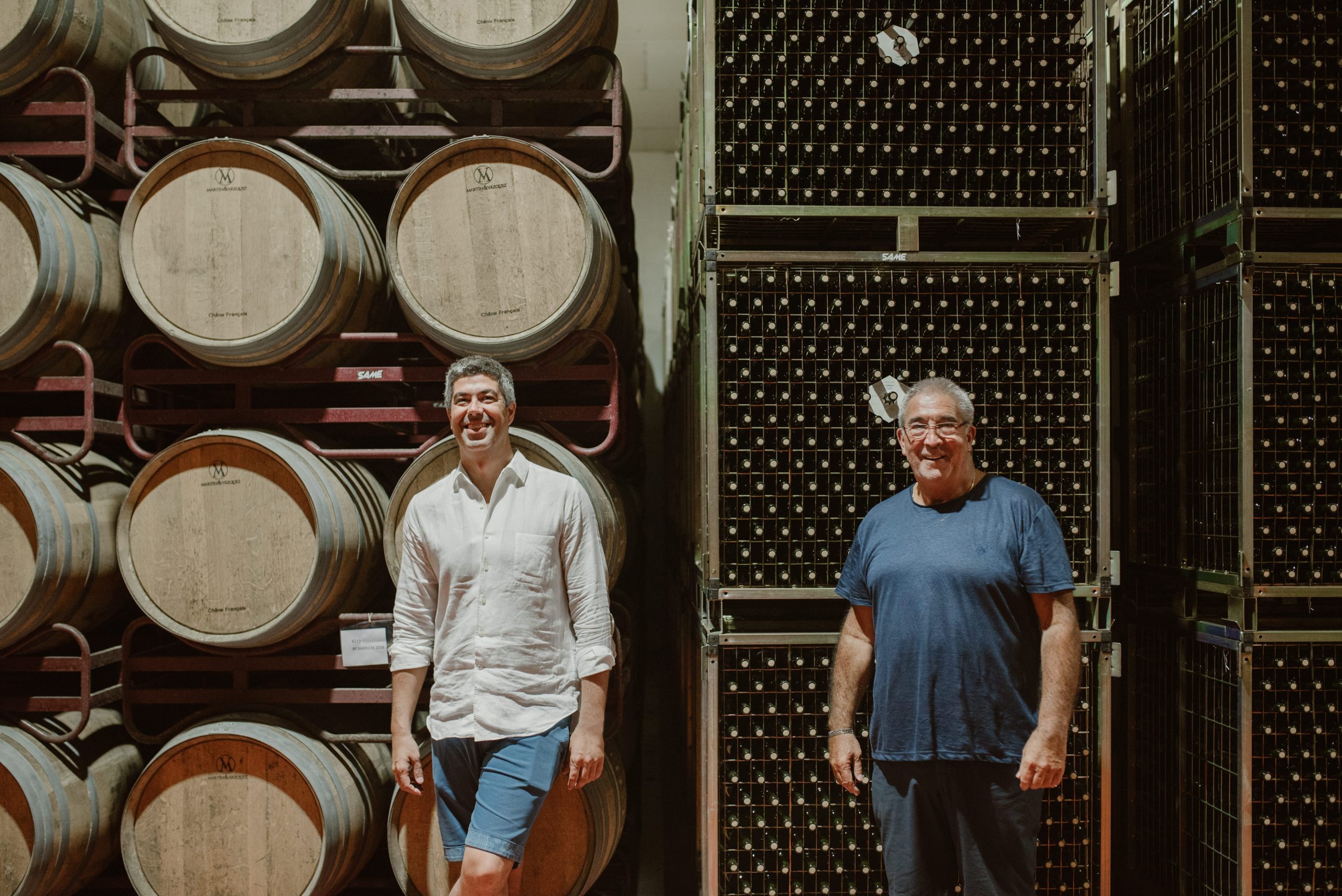The rise of cannabis drink culture
Does the rise of cannabis-infused drinks mean the downfall of wine, beer and spirits? Kathleen Willcox investigates.

Remember bong hits and blunts? Not too long ago, cannabis culture was deeply embedded in the counter-culture. The perception was that cannabis was for hippies and hip hoppers, and all about getting blitzed. Wine, meanwhile, was for deep thinkers, poets and hard-charging business types.
How times have changed. Now, billionaire business titans and eggheads like Elon Musk, Sir Richard Branson, Carl Sagan and Bill Gates have joined the followers of Jerry Garcia and Snoop Dogg in touting the merits of marijuana. It’s become socially acceptable for GOP soccer moms to indulge in a little gummy action—and openly admit it.
Drinking wine, meanwhile, has become increasingly associated with negative health outcomes and more sinister aspects of motherhood.
At this point, about 17% of Americans cop to ingesting marijuana according to a Gallup poll, an uptick from 11-13% between 2015 and 2021. This increasing comfort
around cannabis stems, at least in part, from a much more liberal legal landscape.
Changing Laws
As laws across the U.S. increasingly accommodate cannabis-spiked drinks in both on and off-premise outlets that also sell alcohol, sales of cannabis drinks are surging, as sales of
wine, spirits and beer plummet.
This all came to a head during Dry January when sales of alcohol were down 52% during the first week of the year, and many people simply swapped their winddown glass
of vino, bourbon or beer for cannabis. (Up to 90% of Gen Zers replaced alcohol with cannabis, according to a poll from opinion researchers at CivicScience.)
But it’s more than a month-long blip, and instead augurs a broad demographic and cultural shift, analysts argue.
“The market for cannabis infused beverages has been growing for the last several years,” says William Bogot, a partner and co-chair of the Cannabis Practice Group at Fox Rothschild LLP in Minneapolis. “Post-pandemic, many people reduced their consumption of alcohol and increased their consumption of cannabis-infused beverages.”
New emulsion methods have allowed producers to infuse nonalcoholic beer and wine-like products and seltzers with THC, CBD and more, he explains.
While cannabis is still technically illegal on the Federal level, 38 states have some form of legalized marijuana, and dozens allow sales of cannabis drinks through licensed dispensaries.
Increasingly, states are allowing producers to sell cannabis beverages online or through liquor stores—sometimes by accident.
“Sometimes these new laws have been poorly drafted,” Bogot says. “Connecticut appears to have unintentionally allowed sales of traditional dispensary-only cannabis beverages outside of state-licensed dispensaries by the mere change in serving size, so the dose per serving of THC is below the legally restrictive limit.”
Pioneers Lay the Groundwork
While there have been several significant production and legal changes that have opened the door to cannabis drinks productions in recent years, a few pioneers have been quietly laying the groundwork for the current Renaissance.
Wynk Seltzer + THC launched in 2020, and the challenges became crystal clear, fast.
“At that point, you could only sell cannabis drinks in dispensaries,” says Wynk’s general manager Phil McFarland. “And you couldn’t move products across state lines. But we realized that creating a production plant in every state we wanted to sell in wouldn’t be feasible. Can you imagine building a brewery in every state you wanted to sell beer in?”
Instead, Wynk created a mobile canning and production line that they could drive state-to-state. They linked up with marijuana processors in different states, and were able to sell
their low-dose cannabis drinks in dispensaries. But there was a consumer-product mismatch, McFarland says.
“People shopping at dispensaries don’t typically want a 2.5 or 5 milligram product,” he explains. “A joint contains about 150 milligrams of THC, whereas our cans had 2.5 or 5
milligrams a serving.”
Partner Content
In 2022, Minnesota transformed the cannabis market when it passed a law that allows products with up to 10 milligrams to sold in liquor stores. As of now, McFarland says that they are looking to sell in eight states that allow cannabis products in large 21+ retail stores. In 2023, Wynk doubled their revenue-year-over-year, and this year, they are forecasting more than doubling their revenue year-over-year.
Indeed Brewing Company also took advantage of the changes, rolling out a line of THC drinks in its Minneapolis taproom one month after legislators made the changes.
“We knew it was going to be big,” says Indeed’s chief business officer, Ryan Bandy. “And we had the infrastructure because we were a working brewery.”
This year, Bandy estimates that their line of THC beverages—which includes the 5 mg THC/CBD High Fiver: Pistachio Dream and the 10 mg THC/CBD Double High Fiver: Pink Burst—will account for 20 percent of their overall revenue. Bandy estimates that they will produce around 50,000 cases of THC seltzer this year.
As of now, their THC seltzers can be ordered online and shipped to 30 states.
A Transformed Drinks Culture
The culture around drinking, meanwhile, has been evolving for some time. It seems that changes in legislation are finally beginning to meet consumers where they want to be.
“When I joined Jeff Cohen and Andrew Horlick to launch Second Act Cannabis, we wanted to destigmatize cannabis through social experiences, and secure its place at the dinner table and social gatherings,” says Eric Rogers, co-founder of Second Act Cannabis. Like wine, Rogers believes that cannabis is at its best when consumed with friends, food and conversation. Their first few products are focused on food (a hot sauce and olive oil), but they plan on launching cannabis-infused maple water drinks in time for summer.
Rogers says that perception of cannabis and alcohol consumption has changed, and he sees now as the ideal time to leverage the changes in the legal landscape.
“Our target market is really new parents to baby boomers,” Rogers explains. “For parents, especially with babies, having a hangover isn’t tolerable. Cannabis represents a social alternative that meets a wide variety of needs.”
Giuseppe Infusino, chief investment officer and managing partner at InvestBev, an investment firm dedicated to the adult beverage market, agrees that everyone—but especially younger people—are consuming alcohol more moderately.
“There is no denying that beer and wine especially face significant challenges,” Infusino says. “And in markets where recreational cannabis is legal, beer and wine sales are hurting even more. Low-dose cannabis beverages will appeal to the broadest set of consumers, and pulling these products out of dispensaries and putting them into mainstream retail allows them to get into the hands of consumers who might not shop in dispensaries.”
The biggest obstacle to “massive growth,” Infusino says, is regulatory.
“The 2018 Farm Bill opened a lot of doors for the industry,” Infusino notes. “Where things shake out long term on the federal level will have broad sweeping impact on the
industry. The focus is always on federal legalization, and the Farm Bill update scheduled for 2024, but there are steps that are more likely that could have significant
impacts, as well, including deregulation and banking changes. If we get clarity there, you will see more investment into the space from investors, distributors and retailers.”
The market—especially among young consumers—is thirsty for this kind of change. Can the wine, beer and spirits industry join and benefit from—instead of fight—the
seemingly inevitable shift away from classic drinks culture toward a looser and more laidback approach to social drinking?
The history of alcohol brands investing in cannabis has not always been positive. (See:Constellation Brands’ $1.1 billion writedown in the value of its investment in Canopy Growth).
But others, including smaller brands like Indeed, and larger operations like Vintage Wine Estates in Sonoma, see it as a way to meet consumers where they want to be, while also meeting their own revenue and growth goals.
It’s a space we’ll be watching closely.
Related news
Cannabis drink crackdown reshapes US beverage market
Suntory chairman Takeshi Niinami resigns after police search




